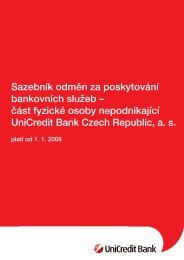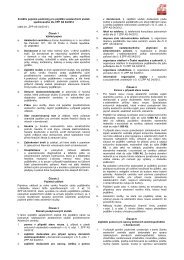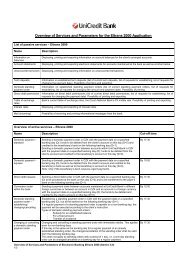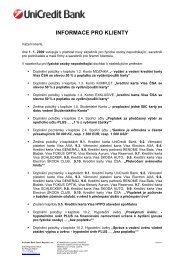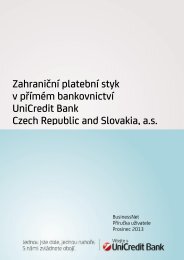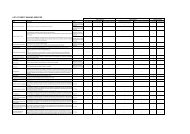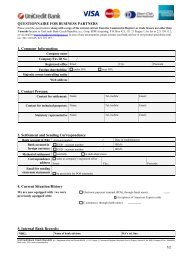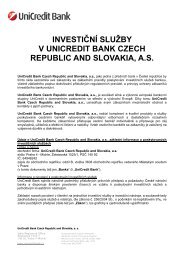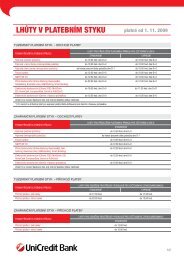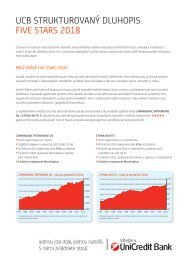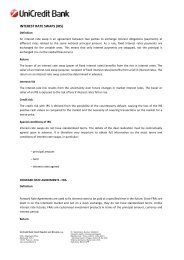Annual report 2004 (PDF, 4141 kB) - Unicredit Bank
Annual report 2004 (PDF, 4141 kB) - Unicredit Bank
Annual report 2004 (PDF, 4141 kB) - Unicredit Bank
You also want an ePaper? Increase the reach of your titles
YUMPU automatically turns print PDFs into web optimized ePapers that Google loves.
(c)<br />
Foreign currencies<br />
The consolidated financial statements are presented in Czech crowns (“CZK”) which<br />
is the measurement currency of all companies within the Group.<br />
Foreign currency transactions are translated into the measurement currency at the exchange<br />
rates prevailing at the dates of the transactions. Foreign exchange gains and losses resulting<br />
from the settlement of such transactions and from the translation of monetary assets and<br />
liabilities denominated in foreign currencies, are recognised in the income statement.<br />
All resulting foreign exchange gains and losses are recognised in net trading income.<br />
(d)<br />
Derivative financial instruments<br />
Derivative financial instruments including foreign exchange forwards, forward rate<br />
agreements (FRA), currency and interest rate swaps and credit derivatives are initially<br />
recognised in the balance sheet at cost (including transaction costs) and subsequently<br />
are remeasured at their fair value. Fair values are obtained from quoted market prices<br />
and discounted cash flow models. Positive fair value of derivatives is recognized as an asset<br />
and negative fair value of derivatives is recognized as a liability.<br />
Certain derivatives embedded in other financial instruments are treated as separate derivatives<br />
when their risks and characteristics are not closely related to those of the host contract and the<br />
host contract is not carried at fair value with unrealised gains and losses <strong>report</strong>ed in income<br />
statement.<br />
Changes in the fair value of derivatives held for trading are included in net trading income.<br />
On the acquisition date, the Group designates certain derivatives as a hedge of the fair value<br />
of a recognised asset or liability (fair value hedge). Hedge accounting is used for derivatives<br />
designated in this way provided certain criteria are met.<br />
The Group’s criteria for a derivative instrument to be accounted for as a hedge include:<br />
a) Formal documentation of the hedging instrument, hedged item, hedging objective,<br />
strategy and relationship is prepared before hedge accounting is applied;<br />
b) The hedge is documented showing that it is expected to be highly effective in offsetting<br />
the risk in the hedged item throughout the <strong>report</strong>ing period; and<br />
c) The hedge is effective on an ongoing basis.<br />
Changes in the fair value of the effective portion of derivatives that are designated and qualify<br />
as fair value hedges and that prove to be highly effective in relation to the hedged risk, are<br />
recorded in the income statement, along with the corresponding change in the fair value<br />
of the hedged asset or liability that is attributable to that specific hedged risk.<br />
71



